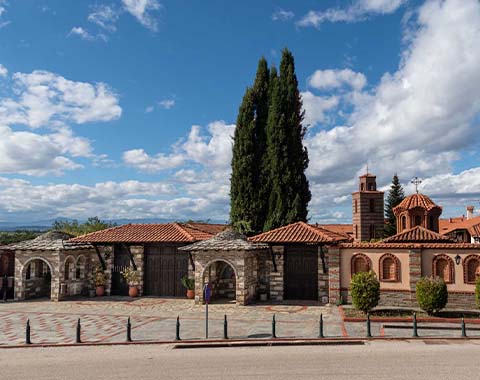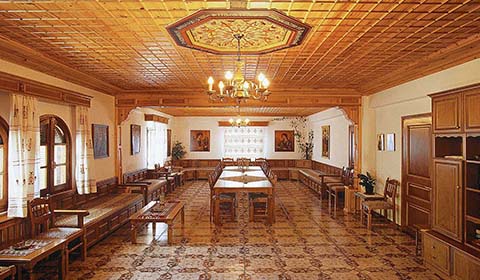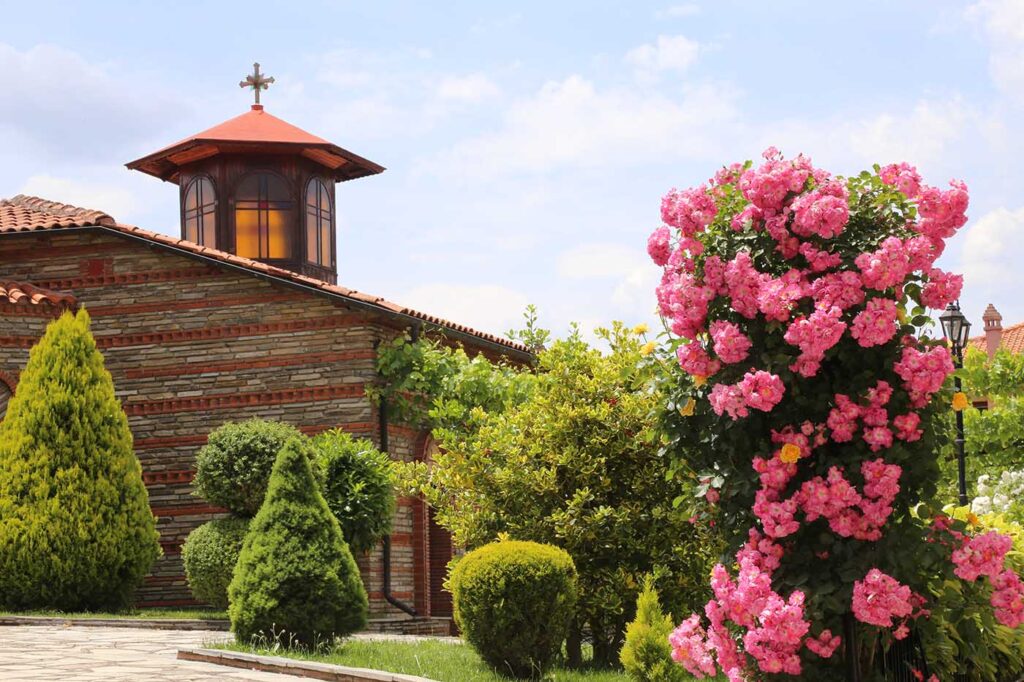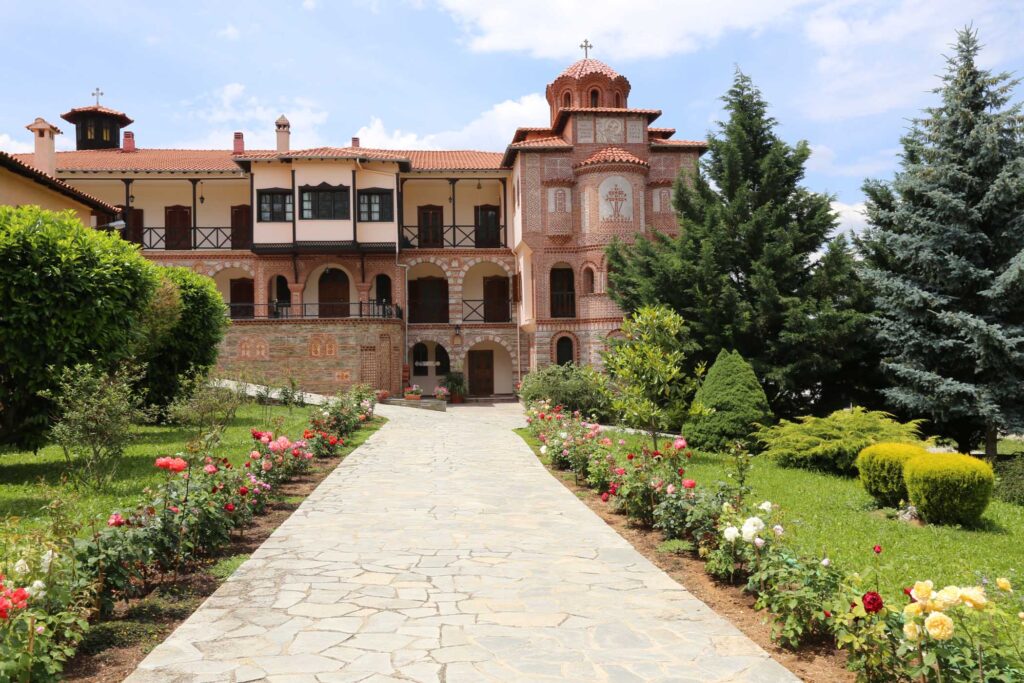
The Holy Monastery of the Dormition of the Theotokos, located in western Macedonia, was built in the middle of the 18th century.
It played a major role in religious affairs, national aspirations and social matters not only during the Ottoman occupation and the Greek revolution but also long after that it continued to contribute to the local historical evolution, spiritually and materially.
Initially, it functioned as the local parish church for the residents of the adjacent town of Mikrokastro. However, it soon became a major religious center for pilgrims thanks to the many miracles of the miracle working icon of the Holy Merciful (Eleousa) Mother of God.
In the year 1993 functions as a convent in the East Orthodox monastic typicon.
The Sisterhood has continued all the renovations of the previous years, as well as raising a new wing of cells, workshops, chapels and guesthouses. The Sisters landscaped the surrounding area, implemented reforestation programs and preserved the buildings in the Monastery which is now given by law the status of preserved religious and historical monument.
The miraculous ephestian Icon of the Panagia Eleousa
History of the Holy Icon of Panagia of Mikrokastro
In the holy Monastery of Panagia of Mikrokastro, located twelve kilometers south of the city of Siatistas, the ephestian Icon of Panagia Vrefokratousa, known as Panagia the Eleousa, is kept as a precious relic.
The place where the icon was painted is not known, nor the name of the hagiographer, nor the exact date. Information of researchers is filtered. However, it definitely ranges between the 12th and 16th centuries. It is much older than the catholic Church of the Monastery and because for centuries according to tradition this icon performed and continues to perform miracles, the area of the Monastery developed into a great Pilgrimage.
The Icon toured the surrounding villages either on regular dates for the sanctification of the residents of the area or in exceptional cases, during droughts, epidemics and other calamities for the cessation of evil.
The inhabitants of Siatista pay special respect to the Icon, who have long hosted the copy of the Icon, to which also Panagia gave her miraculous grace.
This centuries-old custom is an expression of the reverence of the people, who carry the Icon on foot making an uphill journey of about three hours, without violating the day, but also the time of this honorable transport and in any weather conditions. The Icon is received with honor by Ecclesiastical and Political authorities, they accompany it to the Metropolitan Church, where Vespers and other Services take place and then it visits all the residences of the city.
The reverence and honor of these people towards the Icon, which is indeed accompanied by men, women and children, is rewarded by the Lady Theotokos with miraculous events, many of which are recorded and are irrefutable evidence of the supernatural power of our Orthodox faith.

A second custom of the people in relation to the Icon is the custom of the horsemen. Since the years of the Turkish occupation, the young people of Siatista, taking advantage of the freedom granted by the Turkish conqueror only for the day of the Feast of the Virgin Mary, August 15, visited the Monastery on horseback. The custom continues to this day. The horsemen leave the horses at a distance from the Monastery, go to church and then, in their traditional costumes, hold the Icon of Panagia in the great Litany that takes place in the Monastery area.
The presence of so many young people is a moving event and very hopeful that our young people also maintain our ancestral faith.




















